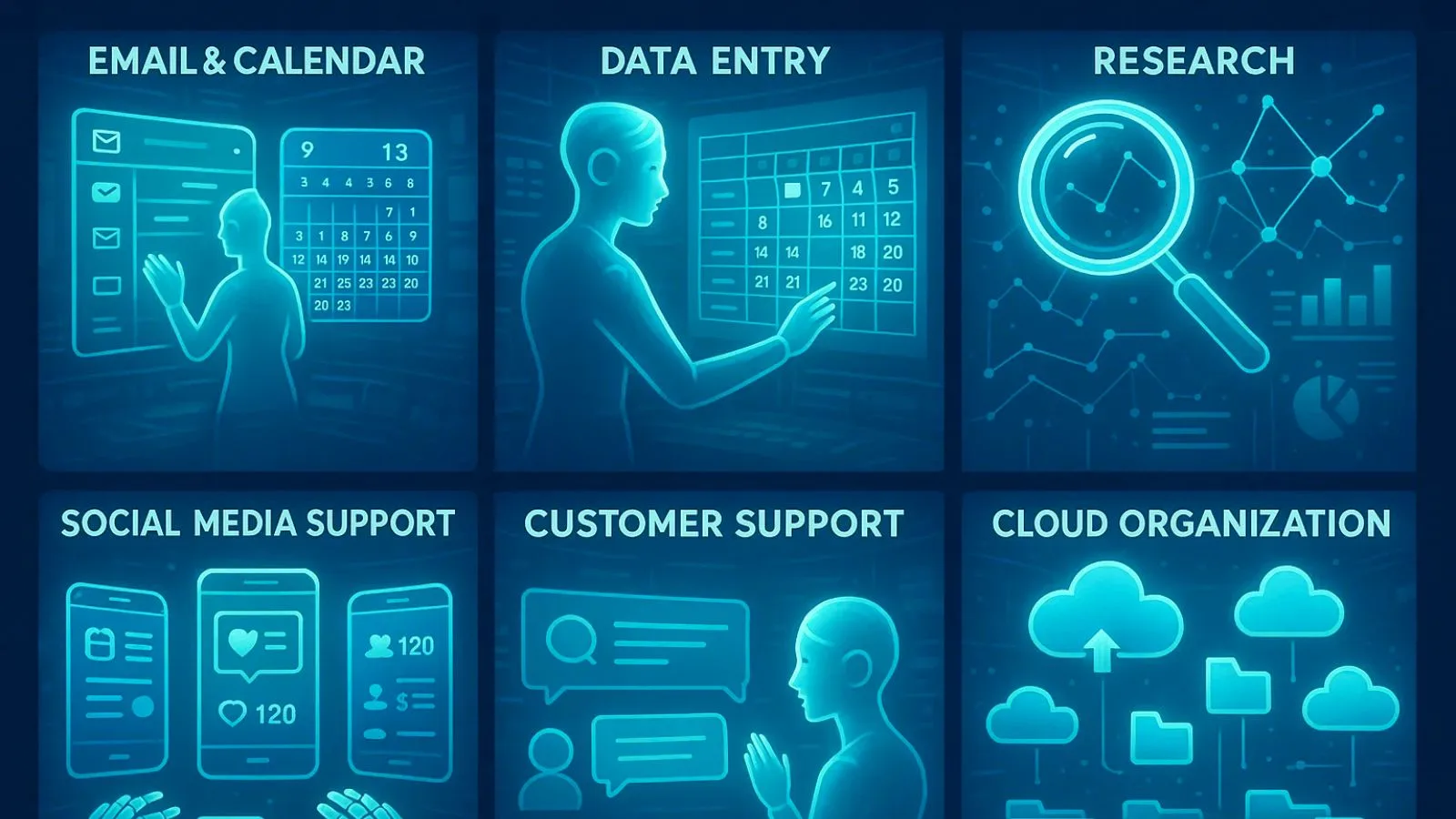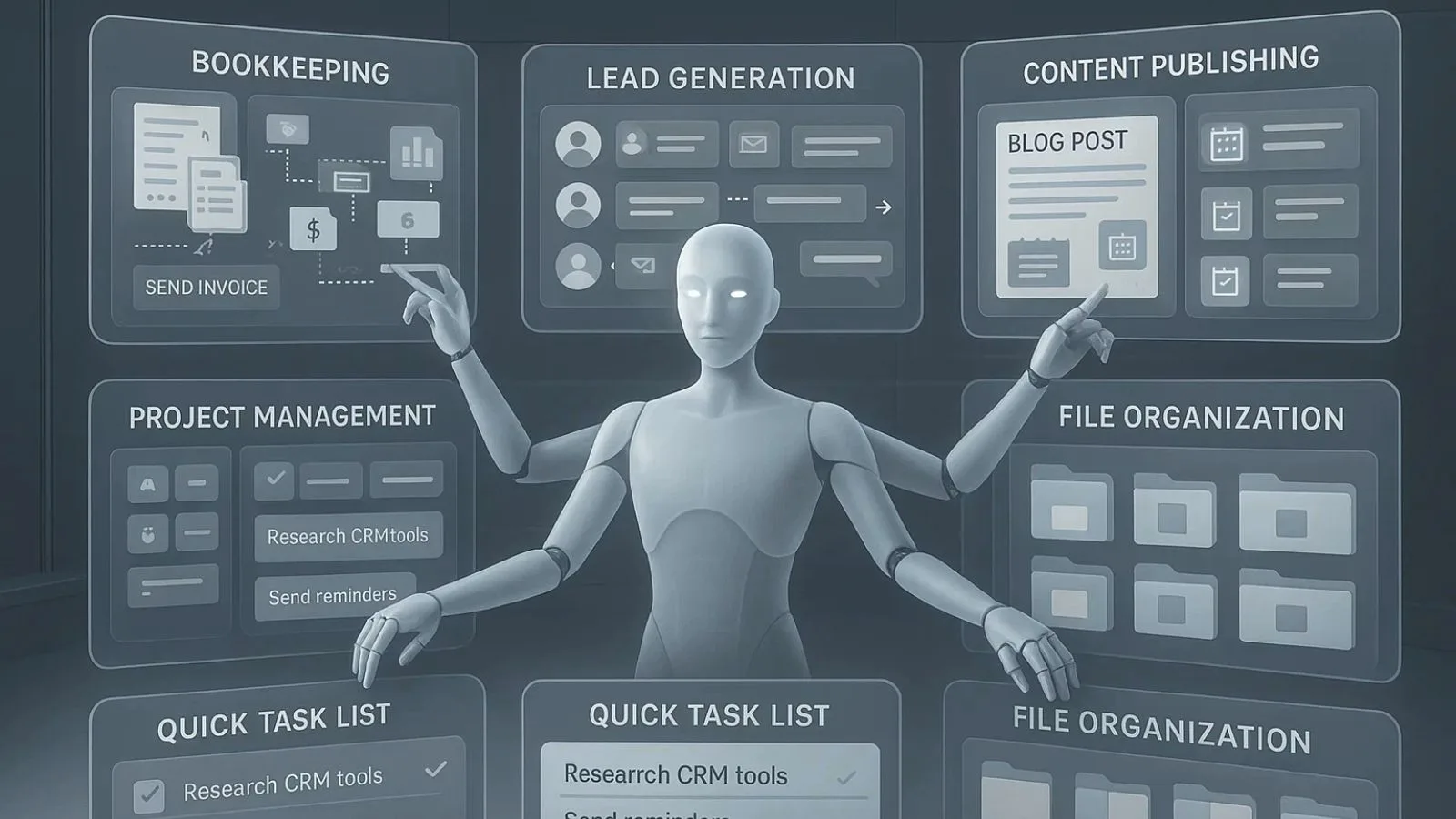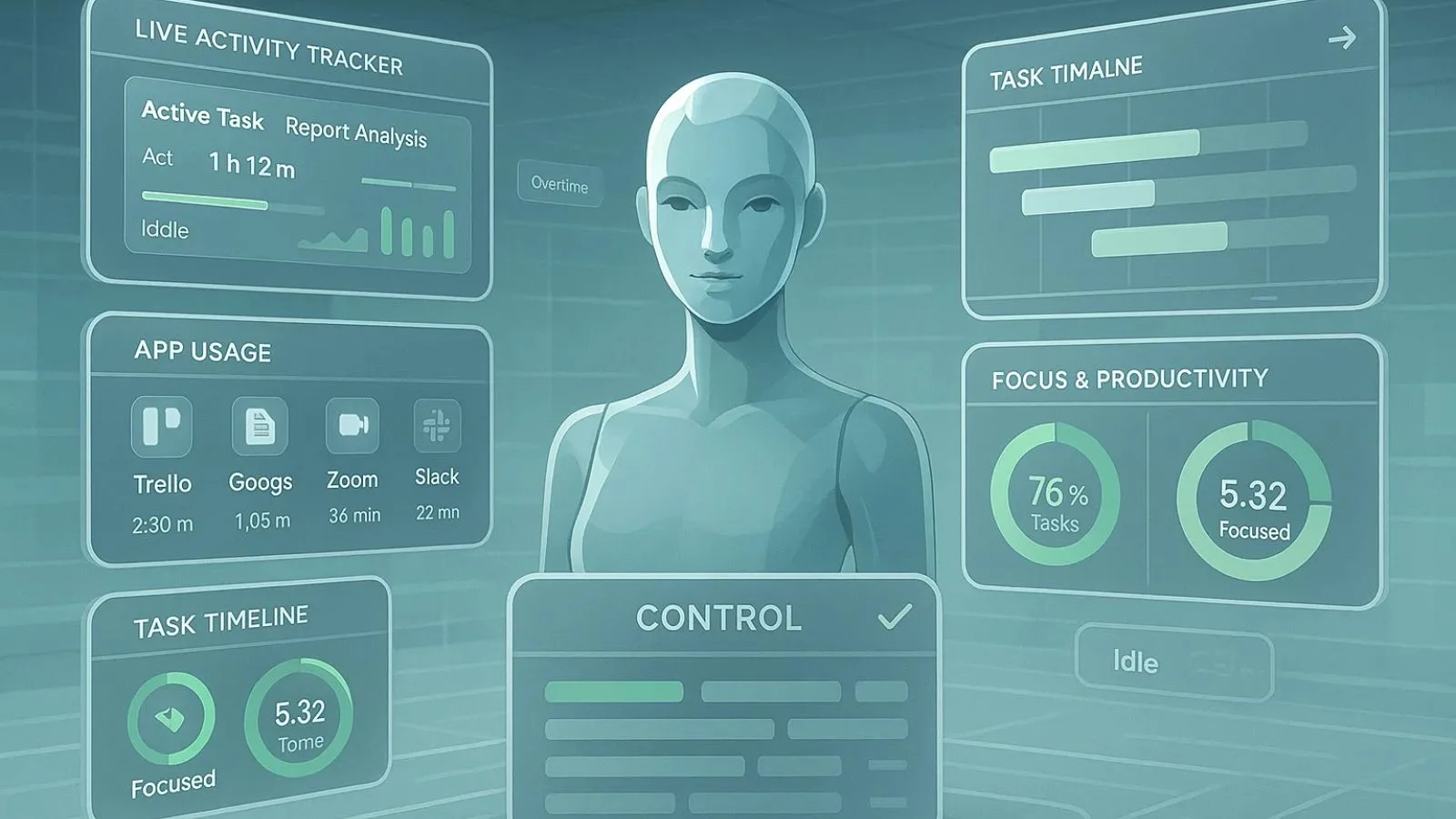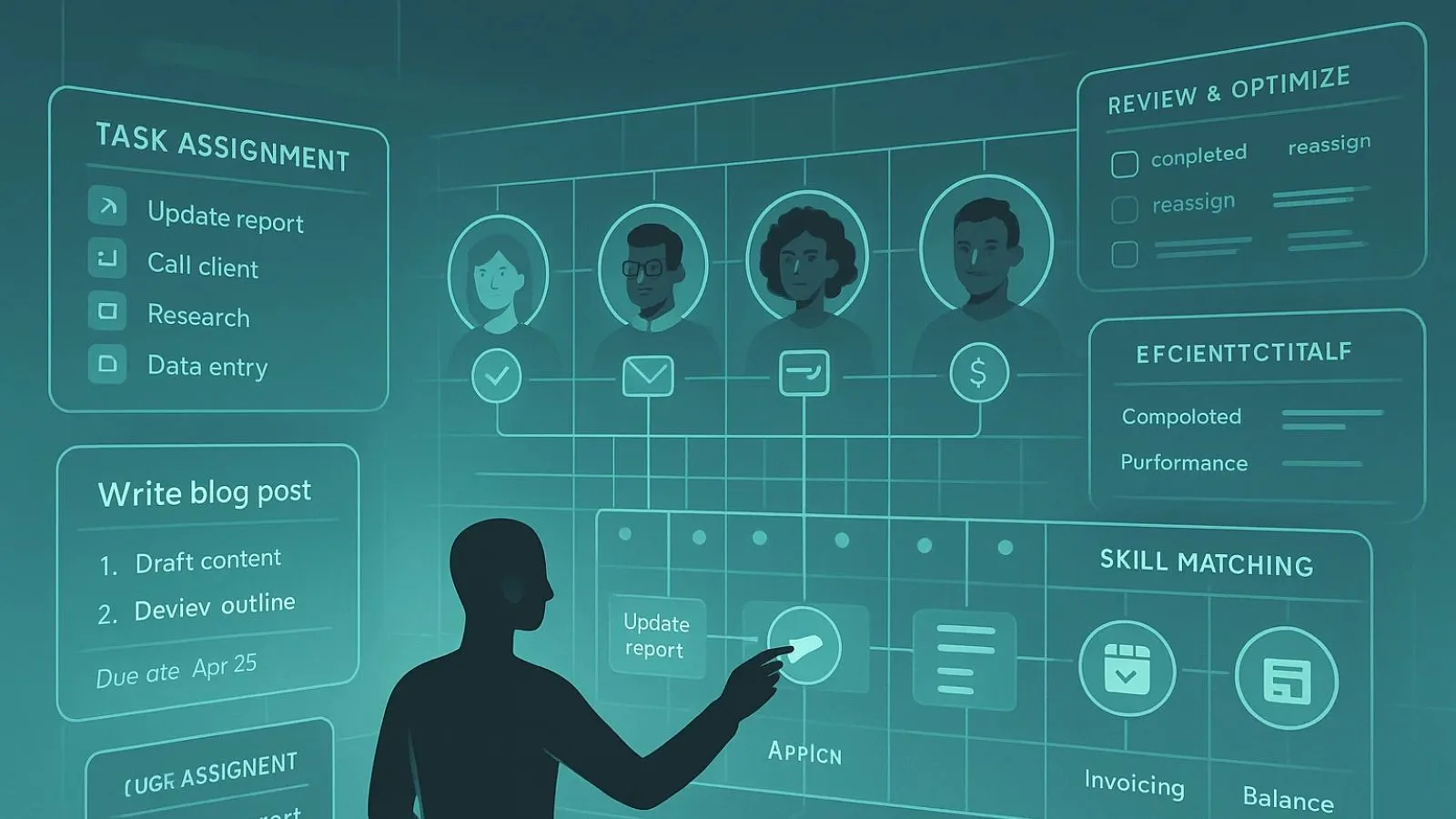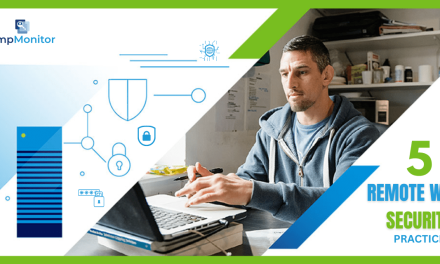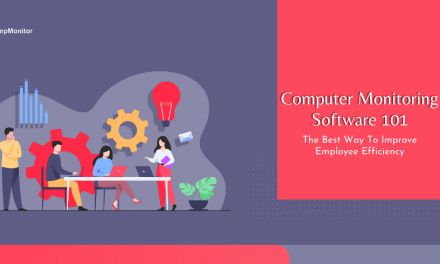In a world where time is the most valuable currency, businesses are constantly searching for smarter ways to stay productive without burning out. That’s where virtual assistant duties come into play.
Over the past few years, virtual assistants have become more than just remote admin support; they’re now vital extensions of growing teams. From handling inbox chaos to managing calendars, organizing data, and even supporting customer service, VAs are taking over the repetitive and time-consuming tasks that drain your energy and attention.
But here’s the thing: not all virtual assistant tasks save you the same amount of time. Some tasks free up your entire afternoon; others just chip away a few minutes. So how do you know which ones are worth outsourcing?
In this blog, we’ll break down the most time-saving duties you can assign to a virtual assistant, explore smart ways to delegate, and show you how to use the right tools to track and manage VA productivity with ease.
Let’s dive into the duties that give you back your hours so you can focus on what moves your business forward.
You can Also listen to our Podcast here.
Understanding Virtual Assistant Duties and Responsibilities
Before you can identify the most time-saving tasks, it’s important to understand the broader scope of virtual assistant duties and responsibilities. Virtual assistants, or VAs, are remote professionals who handle a variety of operational, administrative, and technical tasks depending on your business needs. Many business owners also choose to outsource tasks to a virtual assistant to free up their time and focus on high-priority work.
Some VAs specialize in creative services like content writing or social media management. Others are experts in back-office support such as scheduling, data entry, or email management. What makes them so valuable is their ability to adapt to your workflow and take over the tasks that slow you down.
At their core, virtual assistant duties revolve around three goals:
-
Freeing up your time
-
Reducing your mental load
-
Streamlining repetitive tasks
Many business owners make the mistake of thinking a VA can only help with basic admin tasks. In reality, a skilled VA can support project management, lead generation, research, and even customer experience.
The key is knowing how to match the right duties to the right assistant and to prioritize tasks that directly impact your productivity.
In the next section, we’ll explore which of those duties are the biggest time-savers for busy professionals and growing businesses alike.
Time-Saving Virtual Assistant Duties
Let’s get to the part that matters most: which virtual assistant duties are the real time-savers? Below, we’ve broken down the tasks that consistently give business owners, teams, and entrepreneurs back valuable hours in their day.
Each duty listed here not only reduces your workload but also allows you to focus on high-impact decisions and creative growth.
a. Email & Calendar Management
What’s one of the most stressful parts of a workday?
A virtual assistant can handle:
- Filtering emails
- Responding to non-critical messages
- Flagging high-priority requests
- Scheduling meetings and calls
- Managing calendar conflicts
These virtual assistant duties not only keep your day organized but also eliminate the constant distraction of checking emails. Just imagine how much time you’d gain if you only focused on the emails that truly mattered.
b. Data Entry & Database Updates
Spending hours updating spreadsheets or inputting CRM details is not a good use of your time.
Virtual assistants can handle:
- Updating client or customer databases
- Organizing Excel sheets
- Uploading documents
- Maintaining project files
These virtual assistant duties are repetitive, easy to delegate, and highly time-consuming if left to you. The more data your business handles, the more important it is to delegate it.
c. Research & Information Gathering
From finding the right vendor to collecting market insights, research is critical, but it’s also a time drain.
Tasks your VA can take over:
- Market research for new products or services
- Competitor analysis
- Travel and accommodation planning
- Vendor or software comparison
This is where a virtual assistant duties becomes your behind-the-scenes strategist, saving you hours of screen time and tab-jumping.
d. Social Media Support
You don’t need to be glued to your brand’s Instagram to maintain an active online presence.
Common VA tasks:
- Scheduling content
- Responding to DMs or comments
- Repurposing posts
- Engaging with followers
Your VA can also help with creative assets such as finding or organizing branded social media elements like social media logos to keep your posts visually consistent and professional. When you offload these virtual assistant duties, you maintain consistency on social media without sacrificing your productivity. It also lets you focus on the bigger strategy behind your digital presence.
e. Customer Support Assistance
Virtual assistants are often the first touchpoint for customer queries.
They can:
- Respond to basic FAQs
- Process refunds or order changes
- Route issues to the right department
- Monitor live chat inboxes
These virtual assistant duties and responsibilities help maintain customer satisfaction while reducing your direct involvement in every support issue.
File Organization and Cloud Management
A cluttered drive or Dropbox can cost you more time than you realize.
VAs can handle:
- Renaming and organizing files
- Sorting folders by project or client
- Backing up key documents
This often-overlooked task can drastically improve your digital efficiency, especially when multiple team members are collaborating on the same platforms.
Specialized Virtual Assistant Duties That Scale Businesses
Beyond the foundational tasks like email and scheduling, some virtual assistant duties can actively support business growth. These are the responsibilities that not only save time but also push your operations forward by boosting efficiency, freeing up your brainpower, and driving measurable results.
Let’s break down a few high-leverage virtual assistant duties that can make a real difference in scaling your business.
Bookkeeping & Invoice Management
Tracking payments, sending invoices, and updating expense logs can be draining, but they’re crucial for business health.
A virtual assistant can:
- Record transactions
- Create and send invoices
- Reconcile bank statements
- Organize receipts for accounting
When handled consistently, these tasks reduce financial errors and save countless hours each month.
Lead Generation & Outreach
Generating leads is vital, but outreach takes a lot of it. With the right training, a VA can manage this process efficiently.
Key tasks include:
- Sourcing leads via LinkedIn or directories
- Sending cold emails or follow-ups
- Maintaining outreach spreadsheets
- Qualifying basic leads before passing to sales
Adding this to your virtual assistant task list gives your sales team a major time advantage.
Content Formatting & Publishing
If you’re blogging, sending newsletters, or publishing social posts, your content workflow has repetitive steps that can be offloaded.
VAs can help with:
- Formatting blog drafts
- Scheduling newsletters in tools like Mailchimp
- Uploading and tagging website content
- Creating simple visual templates in Canva
These virtual assistant duties ensure your content calendar runs on time without you getting bogged down in the details.
Project Management Support
For growing teams, project coordination becomes essential and overwhelming.
Virtual assistants can assist by:
- Updating project boards
- Following up with task owners
- Sending deadline reminders
- Summarizing meeting notes
They become the glue between your team and your deadlines, helping projects move smoothly without constant oversight.
Example Virtual Assistant Task List (Quick Reference):
- Schedule social posts for the week
- Research the top 5 CRM tools for a blog
- Send reminder emails to webinar sign-ups
- Format and publish last week’s newsletter
- Track and record client invoice payments
- Update the project board with team progress
- Organize the Google Drive folder by project
Each of these saves you hours, and when delegated to the right person, they add real momentum to your day-to-day operations.
What Is Virtual Monitoring and Why Does It Matter?
When you hire a virtual assistant, you’re trusting someone outside your physical office to help run key parts of your business. That’s why virtual monitoring is becoming an essential part of remote team management, especially as businesses scale their use of virtual support.
So, what is virtual monitoring exactly?
In simple terms, it’s the use of digital tools to track the productivity, performance, and accountability of remote workers like virtual assistants. It helps you understand:
- What tasks are being worked on
- How time is being spent
- Which apps or tools are used
- When the VA is active or idle
For businesses with one or more VAs, virtual monitoring isn’t about micromanaging; it’s about building clarity and confidence into the process.
Why Virtual Monitoring Enhances Efficiency
When VAs know their time is being logged transparently, they tend to stay more focused and goal-oriented. And for business owners or managers, you get a clear picture of:
- Where time is being lost
- Which virtual assistant duties take longer than expected
- How to better delegate or restructure tasks
This insight can help you refine your virtual assistant task list, eliminate bottlenecks, and improve overall output.
How EmpMonitor Supports Virtual Assistant Efficiency?
Hiring a virtual assistant is just step one. The real challenge lies in ensuring they stay productive, accountable, and aligned with your goals, especially when they’re working from miles away. That’s where EmpMonitor comes in, your virtual assistant software working quietly in the background to manage it all.
When managing virtual assistant duties, time tracking and performance visibility can be the difference between smooth workflows and missed deadlines. EmpMonitor makes it effortless to stay in control without micromanaging.
Real-Time Activity Monitoring
EmpMonitor tracks your virtual assistant’s active hours, idle time, and login/logout patterns. You can see exactly when tasks are being worked on and how long each one takes. This helps you:
- Eliminate time-wasting
- Set realistic deadlines
- Optimize your virtual assistant task list
Productivity Reports
With EmpMonitor, you get a detailed breakdown of:
- Time spent on specific applications or websites
- Productivity scores based on behavior
- Daily or weekly performance summaries
This makes it easy to identify which virtual assistant duties are flowing smoothly and which need adjustment or reallocation.
Optional Screenshots for Transparency
If you want visual confirmation of what your VA is working on, EmpMonitor allows periodic screenshots fully customizable to your team’s privacy standards. This ensures accountability and builds trust on both sides.
Task Logs & Attendance Tracking
EmpMonitor keeps a clear record of who worked when and on what. You can:
- Track attendance automatically
- Review task logs and activity history
- Ensure deadlines are consistently met
For businesses that rely on multiple virtual assistants or freelancers, this system centralizes everything so nothing slips through the cracks.
Why It Matters?
When your VA is working efficiently, you’re saving real time, not just outsourcing work for the sake of it. EmpMonitor helps you spot where your workflow is strong, where it’s leaking time, and how to make data-driven decisions that benefit everyone involved.
It’s not just a monitoring tool; it’s a productivity partner designed to help you get the most out of every delegated task.
Tips for Delegating The Right Virtual Assistant Duties
Delegating to a virtual assistant isn’t just about handing off tasks; it’s about assigning the right tasks to the right person, at the right time. When you get that mix right, your day opens up for bigger-picture goals while your VA handles the rest efficiently.
Here’s how to approach delegation smartly, especially when it comes to managing daily virtual assistant duties:
Start with a Clear Virtual Assistant Task List
Before you delegate anything, list out every recurring task you handle. Identify:
- What drains your time?
- What doesn’t require your direct input?
- What could be systematized with instructions?
This list becomes your guide for what your VA can take over. It also helps them know exactly what’s expected, no guessing required.
Match Tasks with Strengths
Not all VAs have the same strengths. Some are better with content creation, others with customer support, and some excel at organizing calendars or inboxes.
Review your virtual assistant task list and categorize tasks based on:
- Skill level required (basic/admin vs. specialized)
- Frequency (daily, weekly, ad-hoc)
- Priority (urgent vs. non-urgent)
Assign accordingly. The better the match, the more time you save.
Use Tools to Monitor & Streamline
Using tools like EmpMonitor allows you to:
- Track time spent on each delegated duty
- Ensure balanced workload distribution
- Identify areas where tasks can be automated or optimized
This allows you to adapt over time and keep your delegation strategy effective.
Set Clear Instructions and Expectations
A well-delegated task includes:
- The goal or outcome expected
- Step-by-step instructions
- Deadline and format (e.g., “reply to emails daily by 5 PM”)
When virtual assistants know what success looks like, they can deliver better — and you spend less time fixing things later.
Review, Improve, and Reassign as Needed
Delegation isn’t one-and-done. Regularly assess how your virtual assistant tasks are being managed
- Task completion time
- Quality of work
- Time-tracking data (via tools like EmpMonitor)
Reassign or revise instructions if needed. This feedback loop keeps your VA relationship smooth and results-driven.
Also Read,
How To Outsource Tasks To Virtual Assistants?
Top 11 Intelligent Virtual Assistant Software To Optimize Your Business Productivity
Conclusion: Make Virtual Assistant Duties Work for You
When used right, virtual assistant duties are more than just a productivity hack; they’re a growth strategy.
From inbox management and scheduling to content creation and customer support, the right VA can free you up to do what you do best: lead, grow, and scale. The key lies in identifying the right virtual assistant tasks, delegating with clarity, and using smart tools to monitor performance.
That’s where tools like EmpMonitor make a big difference. It tracks time, productivity, and workflows so your VAs’ efforts are visible, measurable, and aligned with your goals. It’s not just about handing out tasks; it’s about overseeing them effectively.
So, if you’re ready to save time, reduce stress, and get more done every day, start by optimizing your virtual assistant duties. It’s one of the simplest yet most effective moves you can make for your business.
FAQs About Virtual Assistant Duties
1. What key tasks can a virtual assistant handle for small businesses?
Typical responsibilities include organizing emails, setting up appointments, providing customer support, managing social media posts, conducting research, and preparing invoices. These tasks save time and boost consistency.
2. How do I create a virtual assistant task list?
Start by writing down all recurring tasks you handle in a week. Highlight tasks that are time-consuming or repetitive. Use this as your initial virtual assistant task list and expand as needed.
3. What is virtual monitoring, and why is it useful?
Virtual monitoring involves using software to track your virtual assistant’s working hours, productivity levels, and task completion, helping ensure accountability and efficiency. Tools like EmpMonitor help ensure accountability, streamline workflow, and improve task delegation.



